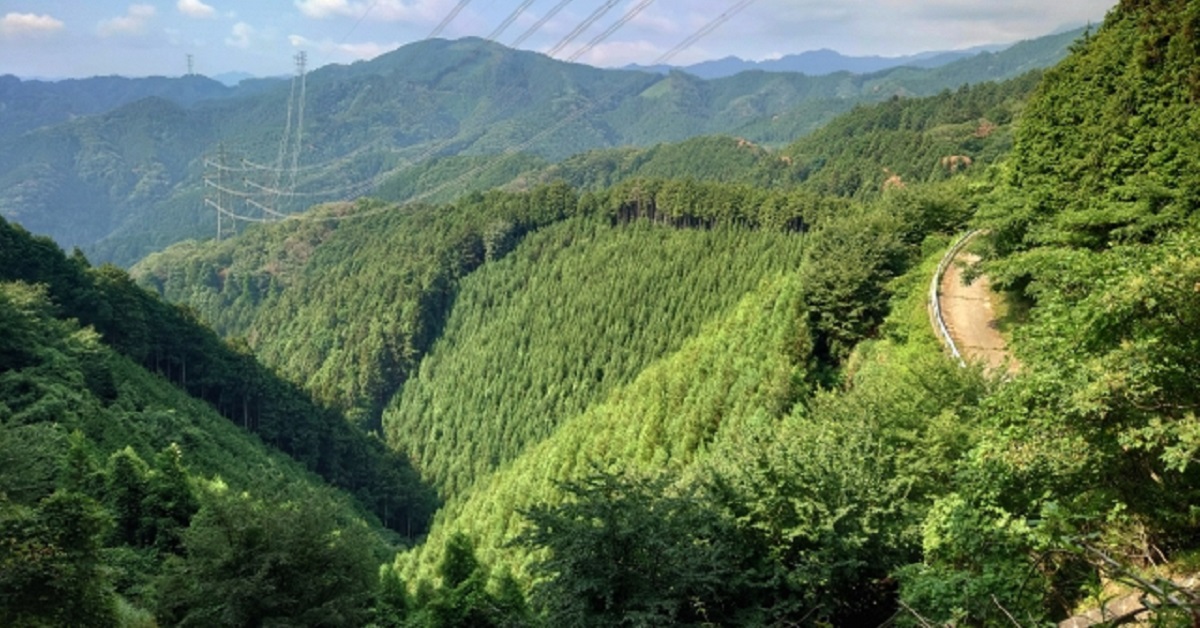Mount Hinode in Nishitama District, Tokyo, is a mountain loved for its nature and panoramic views. In recent years, it has been recognized as a sacred site of Demon Slayer, presumed to be the birthplace of Gyomei Himejima, the Stone Hashira. Visitors can enjoy hiking and sightseeing while also experiencing a deeper connection to the story’s world.
What is Mount Hinode
A mountain rich in nature in Tokyo
Mount Hinode stands at 902 meters, located at the gateway to Okutama. From its summit, one can see the Kanto Plain, Tokyo Skytree, Shinjuku skyscrapers, and even Mount Fuji on clear days. Despite being close to the city, it offers a deep forest environment where visitors can enjoy different sceneries in each season: fresh green in spring, lush shade in summer, colorful foliage in autumn, and crisp clear skies in winter.
Autumn foliage is particularly famous, drawing many hikers and photographers. In winter, the quiet atmosphere and clear air allow breathtaking views of distant mountains.
The harmony of nature and urban scenery heals visitors and gives credibility to the mountain as a stage for a story emphasizing spirituality.
Why it is Considered a Sacred Site of Demon Slayer
Connection with Gyomei Himejima
Gyomei Himejima, one of the Hashira in Demon Slayer, is portrayed as deeply religious, compassionate toward orphans, yet possessing overwhelming strength. His dual nature of strictness and kindness mirrors the environment of Mount Hinode. While the trails include steep paths, they are well-maintained, making the mountain both challenging and welcoming. This duality aligns with Gyomei’s personality.
Fan interpretations
Fans often say “the wide open summit feels like a training ground” or “the quiet trails resonate with the character’s spirituality.” Although the official birthplace is not stated, visiting Mount Hinode itself complements the worldbuilding of the story.
Hiking Routes and Access to Mount Hinode
There are several hiking courses, suitable for both beginners and advanced hikers. The route combined with Mount Mitake is especially popular.
| Starting Point | Route | Duration | Features |
|---|---|---|---|
| JR Mitake Station | Via cable car to Mount Mitake | About 2 hours | Suitable for beginners, excellent views |
| JR Musashi-Itsukaichi Station | From Tsuru-Tsuru Onsen | About 2.5 hours | Enjoy hot springs after the hike |
| Ome City Side | Ome Ridge Hiking Course | About 3 hours | For experienced hikers, rich natural scenery |
Hiking Route Comparison
All trails are well-maintained, ensuring high safety. The Mitake route is particularly beginner-friendly, with many sightseeing facilities.
Seasonal Attractions of Mount Hinode
The changing seasons highlight its symbolic role as a sacred site.
| Season | Features | Highlights |
|---|---|---|
| Spring | Bright fresh greenery | Birdsongs and fragrance of young leaves |
| Summer | Dense green shade | Refreshing breeze at the summit |
| Autumn | Vibrant foliage | Red and yellow colors blanket the mountain |
| Winter | Clear air | Night views and distant mountains visible |
Seasonal Attractions
Experiencing the mountain through the seasons can be compared to the training and battles depicted in the series, providing visitors with a deeper emotional connection.
Enjoying Sacred Pilgrimage and Sightseeing
Pilgrimage-like experience
Fans often stand quietly at the summit, gazing at the view as if in prayer. For many, the hike itself feels like spiritual training, immersing them in the story’s world.
Nearby sightseeing and hot springs
After descending, many enjoy bathing at “Tsuru-Tsuru Onsen” as a finale to their pilgrimage. Ome City’s old-style cafes and local cuisine also enhance the journey.
| Tourist Spot | Features | Travel Time |
|---|---|---|
| Tsuru-Tsuru Onsen | Alkaline hot spring, smooth skin effect | Walking distance from trailhead |
| Ome Traditional Café | Retro atmosphere with local food | 20 min by car |
| Yoshino Plum Village | Famous plum blossoms in spring | 30 min by car |
Sightseeing and Hot Springs
History and Cultural Background of Mount Hinode
Since ancient times, Mount Hinode has been regarded as an object of worship, with records of use by mountain ascetics for training. Its name is said to mean “a place to worship the rising sun,” symbolizing spirituality. This spiritual symbolism strengthens the link with Gyomei Himejima’s monk-like character.
Local festivals to protect the mountain still take place, showing deep cultural ties. Knowing this history turns the pilgrimage into an experience that merges culture with the story’s world.
| Cultural Element | Description | Connection |
|---|---|---|
| Shugendo | Site for mountain ascetic training | Ties to Gyomei’s monk-like image |
| Name Origin | “Place to worship sunrise” | Spiritual significance |
| Local Festivals | Traditional events to protect the mountain | Adds credibility to sacred status |
Cultural Background of Mount Hinode
Conclusion
Mount Hinode combines natural beauty with cultural history, making it a special place for Demon Slayer fans. Its atmosphere resonates with Gyomei Himejima’s spirituality, turning hiking into an experience beyond recreation. Easy access from Tokyo makes it ideal for day trips, balancing pilgrimage and sightseeing.
Visitors can feel the solemnity and tranquility of nature, deepening their understanding of the character while finding peace of mind. Mount Hinode is not only for Demon Slayer enthusiasts but also a destination open to all nature lovers, and it will continue to attract many people in the future.






